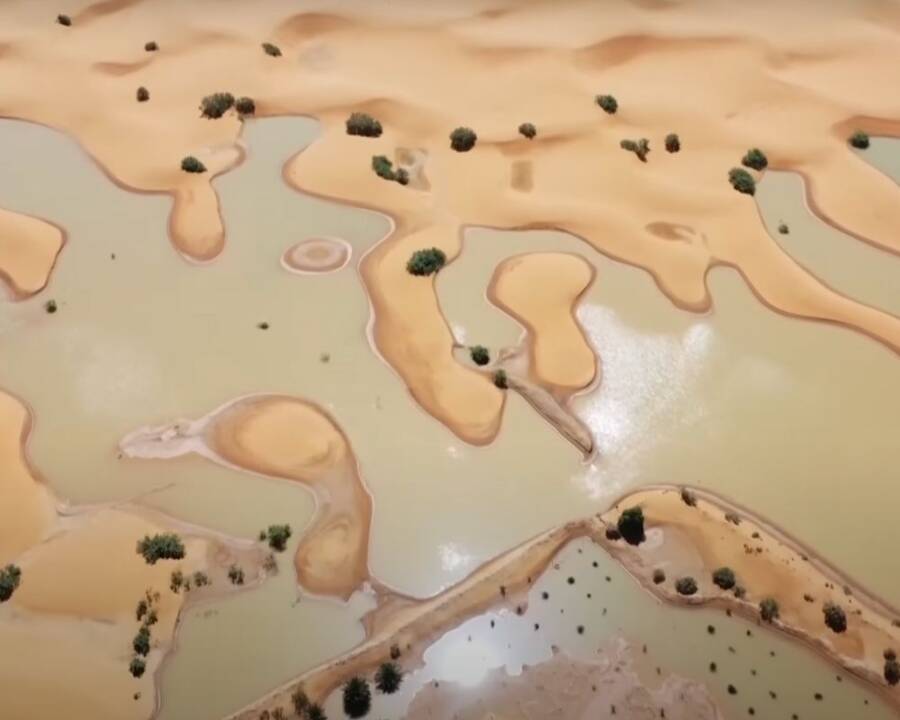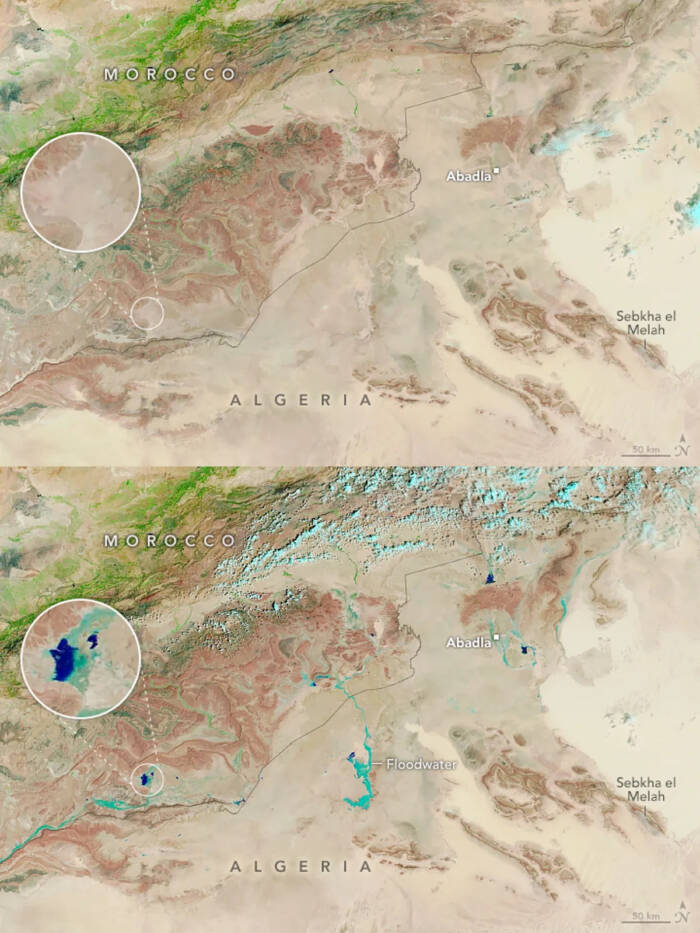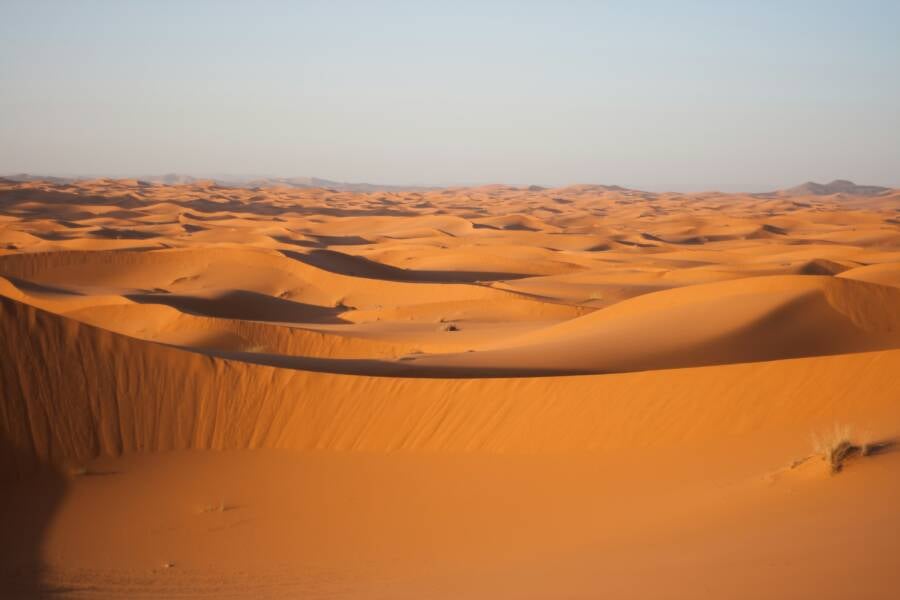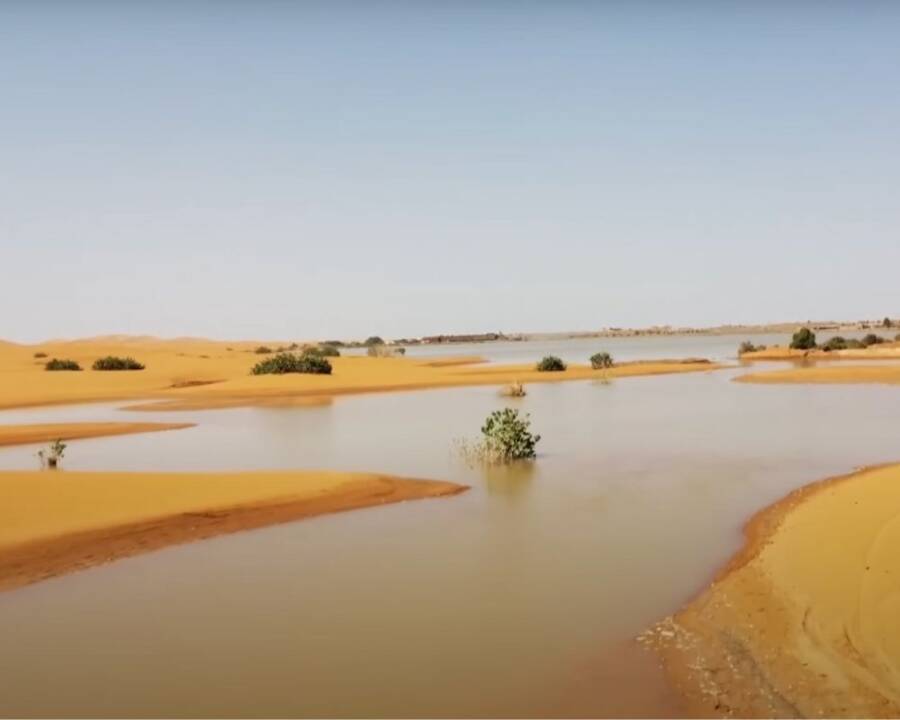Over a two-day period in September 2024, parts of the Sahara Desert received nearly eight inches of rain, leading to flash floods and significant changes to the sandy landscape.

The Guardian/YouTubeThe recent rain event in the Sahara Desert formed new lakes and drastically changed the landscape.
While the Sahara Desert is one of the driest places on Earth, it does receive rare heavy rainfall every few decades. In September, parts of the region saw nearly eight inches of rain, which is more than the area typically receives in an entire year.
The rainfall temporarily transformed the landscape, covering sandy dunes and creating new lakes. Drone footage and satellite imagery from NASA captured the stark changes, showing a dramatic alteration of the desert.
Unfortunately, the heavy rainfall also brought along flash floods that killed at least 18 people and damaged crops. Meteorologists warn that rising global temperatures are accelerating and disrupting the water cycle, leading to more extreme weather patterns. This could mean more instances of unusually heavy rainfall in the Sahara Desert in the future.
Historic Rainfall Leads To Flooding In The Sahara Desert
Between September 7 and 8, parts of the Sahara Desert in Morocco, Algeria, Tunisia, and Libya received nearly eight inches of rain, filling the spaces between sandy dunes and forming temporary lakes.

Michala Garrison/NASA Earth Observatory image Satellite images of the Sahara Desert on August 14 (top) and on September 10 (bottom).
“It’s been 30 to 50 years since we’ve had this much rain in such a short space of time,” Houssine Youabeb, a meteorologist at Morocco’s General Directorate of Meteorology, told the Associated Press.
The heavy rainfall has temporarily altered the landscape of the Sahara. It’s now reminiscent of how it would have appeared thousands of years ago before changing weather patterns made the land arid.
Residents of towns in the region have looked upon the landscape changes with awe. At Iriqui National Park in Morocco, a lake bed that’s sat dry for over 50 years is now filled with water.
Drone footage captured these remarkable sights shortly after the rainfall:
In Tagounite, a village about 280 miles south of Morocco’s capital, a record-breaking 3.9 inches of rainfall was recorded within a single 24-hour period.
Using satellite technology, NASA captured images of the Sahara Desert before and after the historic rainfall, showing just how much the landscape changed. Now, in the aftermath of the extreme weather event, several questions remain: What caused it — and will it happen again?
What Caused The Extreme Rain Event In The Sahara Desert?

Carolina Munemasa/UnsplashThe dry, sandy dunes of the Sahara Desert in northern Africa.
These floods have left both residents of the Sahara and the rest of the world in shock. Much of the rain fell on smaller towns and villages in Morocco and created deadly flash flooding that killed more than a dozen people. The rainfall also put heavy stress on dammed reservoirs in the southeastern Sahara and destroyed crops, resulting in the allocation of emergency government relief funds for farmers.
Experts and meteorologists are concerned that shifting weather patterns will continue to bring unusually heavy, or conversely, unusually scant rainfall to the Sahara Desert.
“As a result of rising temperatures, the hydrological cycle has accelerated. It has also become more erratic and unpredictable, and we are facing growing problems of either too much or too little water,” Celeste Saulo, the Secretary-General of the World Meteorological Organization, stated in a press release.

The Guardian/YouTubeSome parts of the Sahara Desert saw nearly eight inches of rain in 48 hours.
As for why the historic rainfall occurred in the Sahara, meteorologists say that an extratropical cyclone is to blame.
This cyclone formed in the Atlantic Ocean and drew in moisture from equatorial regions of Africa. It was then pushed farther north than usual, resulting in the downpour in the Sahara Desert.
Experts believe that increased global temperatures from fossil fuel burning will only increase the likelihood of future weather anomalies like this one.
After reading about the flooding of the Sahara Desert, go inside 11 of the hottest places on Earth. Then, read the true story of the Berbers, the nomads who made the Sahara Desert their home.





